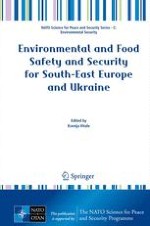2012 | OriginalPaper | Buchkapitel
4. Eco-Friendly Food Processing: 21st Century Challenges
verfasst von : Mladen Brnčić
Erschienen in: Environmental and Food Safety and Security for South-East Europe and Ukraine
Verlag: Springer Netherlands
Aktivieren Sie unsere intelligente Suche, um passende Fachinhalte oder Patente zu finden.
Wählen Sie Textabschnitte aus um mit Künstlicher Intelligenz passenden Patente zu finden. powered by
Markieren Sie Textabschnitte, um KI-gestützt weitere passende Inhalte zu finden. powered by
